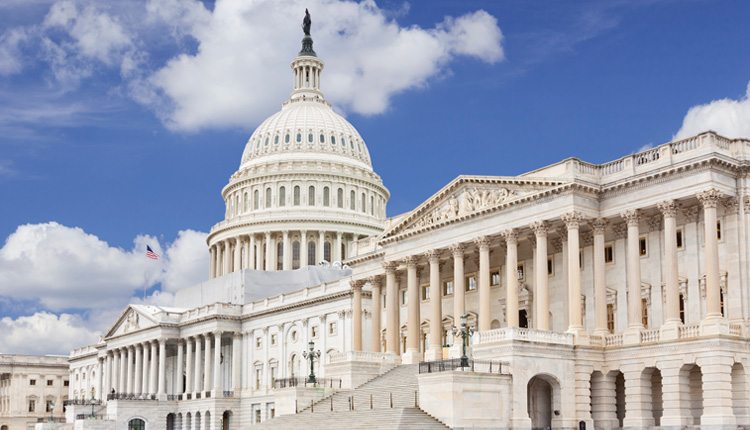The United States Senate has finally passed a bipartisan GMO labeling law. Here’s what you need to know.
Democratic and Republican senators might seem as estranged from one another as ever as November’s presidential election gets closer, but the two sides met in early July to broker and pass a bipartisan GMO labeling law just before taking their summer recess. President Barack Obama had pledged to sign the bill once it arrived on his desk, and he fulfilled that promise in August.
Some advocates on both sides of the issue were surprised at how things turned out, but said a resolution was desperately needed for what had become a divisive issue.
“I don’t think things ever play out in Washington the way people expect,” said Karen Batra, director of communications for the Biotechnology Innovation Organization (BIO).
“From a political perspective we owe a debt of gratitude to our members of Congress. The bill represents what we think is a good middle ground for both sides. It was a big lift to get this done among all the other discussions taking place.”
She calls the final agreement a “workable solution” that gives consumers information without stigmatizing the technology and protects against what threatened to become a patchwork of state laws. The agreement allows food companies to provide content information through the use of on-package symbols, on-package wording or electronic labels, such as quick response codes, that direct consumers to information online.
“The issue has been so divisive and, for a number of years, really took the focus off of some much more important issues in the food production and agriculture arena,” Batra added.
has signed the new
GMO labeling bill that advocates say is a landmark piece of legislation.
Andy LaVigne, president of the American Seed Trade Association, said Vermont’s mandatory GMO labeling law, which came into effect July 1, gave lawmakers an undisputed deadline to respond.
“The whole GMO labeling fight in Washington was ultimately driven by one state’s misguided law which would have had repercussions across the entire nation. It’s not surprising that it came down to the wire, as lawmakers were working hard to reach a common sense, bipartisan solution,” he said.
“We’re pleased that Congress was able to put politics aside and reach an agreement that works for American families and farmers.”
Betsy Barrett, Food Policy Action’s political and communications director, said they were grateful for the “strong bipartisan effort to move the dial forward for consumer transparency in our food system.”
Although the organization had advocated for a mandatory on-pack national disclosure standard, Barrett believes the bill is a step in the right direction for consumers who want to know about the use of GMOs in their food and strengthens organic labeling standards.
Batra said the new law was soundly written and, from all appearances, seems to have addressed concerns voiced by biotech proponents in relation to mandatory labeling.
“The senators did an excellent job on writing this bill that guards against exceptions and loopholes that were written into laws at the state level,” Batra said.
Thanks to flexibility in how those labels can appear on packaging, she said it’s not anticipated that food companies will pass additional costs onto consumers.
Specific to the seed industry, LaVigne said they are pleased the new law preempts state statutes that would have required GMO labels on seed bags, and they’re confident that innovation won’t be stifled.
“More broadly, it protects farmers and small businesses, including seed companies, from a patchwork of costly and confusing state labeling laws, while providing consumers with more information than ever before about the foods they buy, without stigmatizing genetically engineered products with mandatory on-package labels,” LaVigne said.
LaVigne also thinks it’s possible that this compromise might cast the food production industry in a positive light among consumers.
“It is certainly encouraging to see such bipartisan, bicameral support from Capitol Hill for American families and farmers, with backing from nearly 1,100 agriculture, food processors, manufacturers and retailers.”
Batra noted the labeling issue was first a state-level issue that got pushed to the national level, because of what was happening in places like California, Washington, Colorado and Oregon, where ballot initiatives sprang to life. Regardless, those developments got consumers talking and researching, she says.
“Raising awareness of the issue has prompted more people to seek fact-based information about biotechnology, which is a positive,” she said.
Barrett believes consumers will benefit from the new law every time they head to the grocery store, and they count the national-level debate as progress, too.
LaVigne said industry leaders are hopeful the labeling compromise is a sign of more good things to come.
“It also sets the stage for a strong collaborative effort as the agriculture community begins to look at reauthorization of the Farm Bill in the coming years,” he said.
The issue is far from settled, though. Barrett said the FPA, which ranks members of Congress based on their voting record, will negatively score those who voted in favor of the measure.
“Once the bill is law, the debate will move to the USDA for implementation. We will continue to push for transparency in our food system,” she said.













